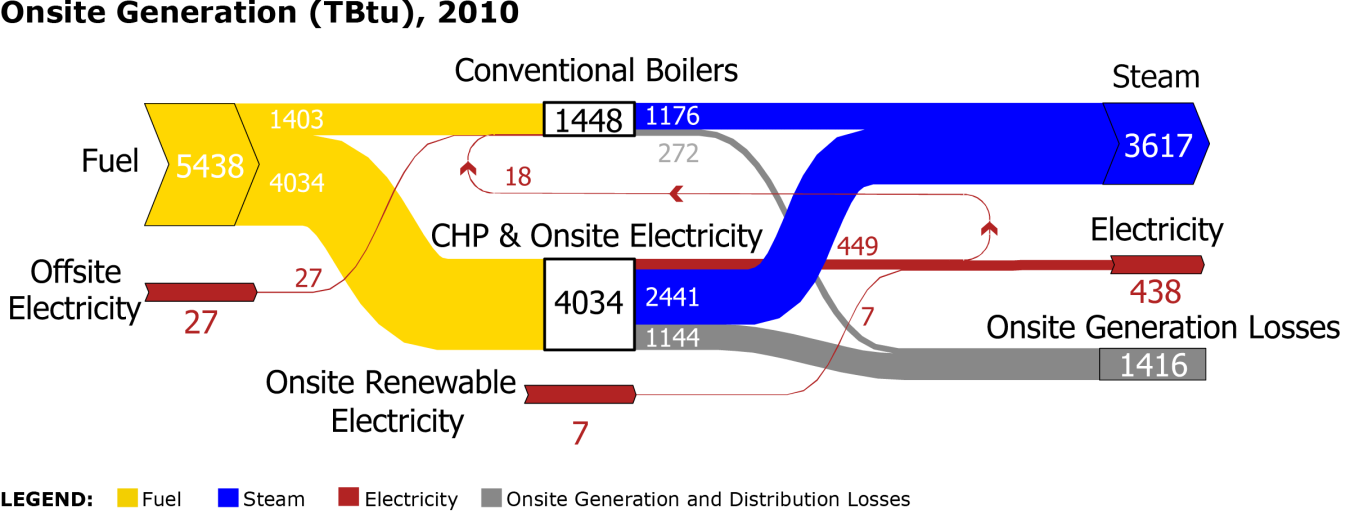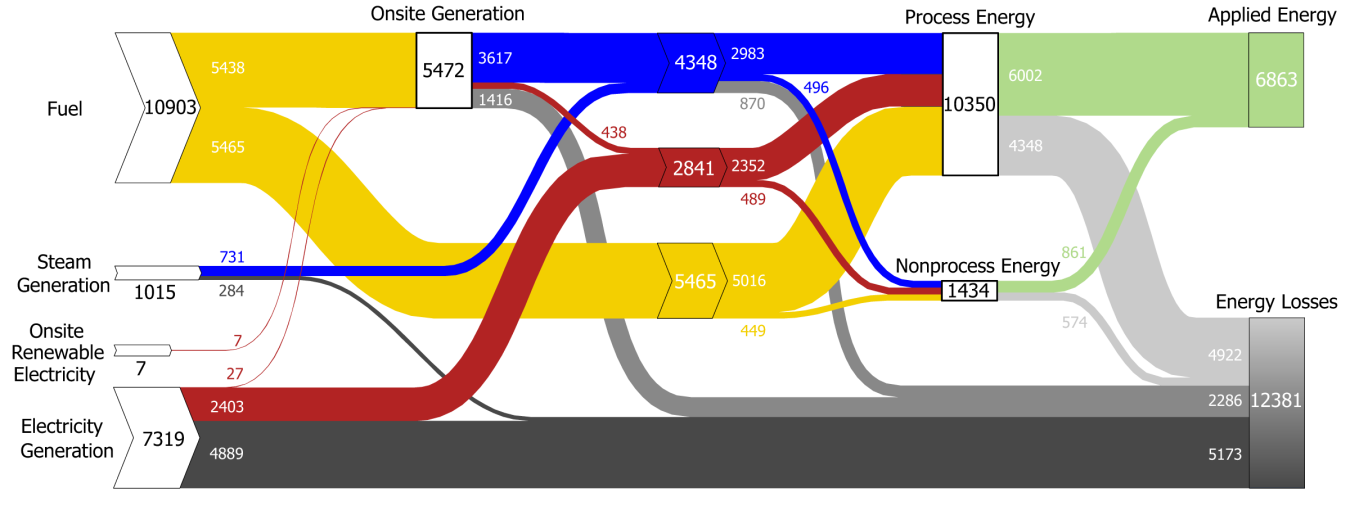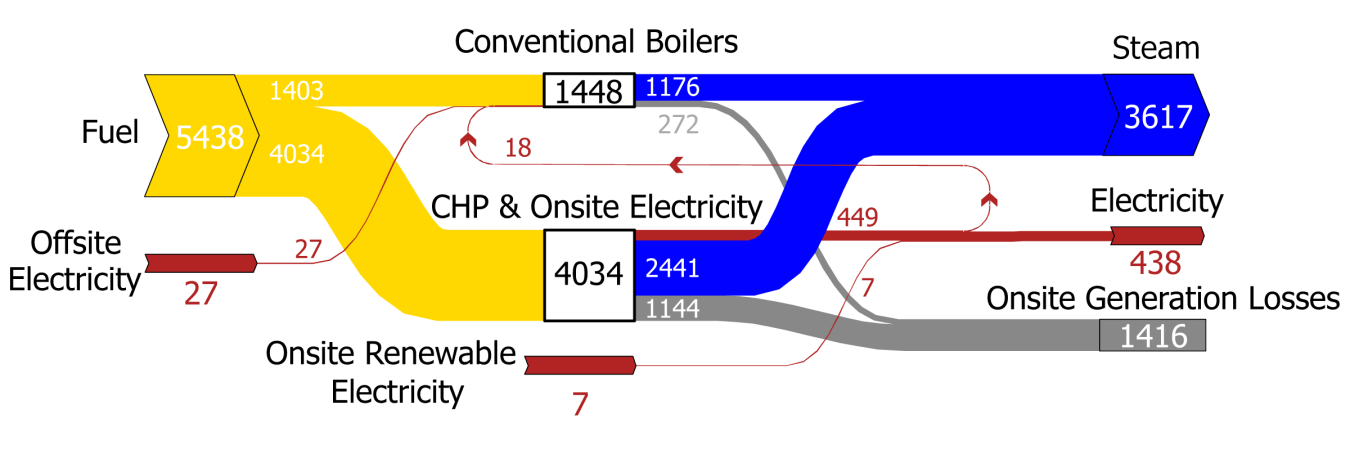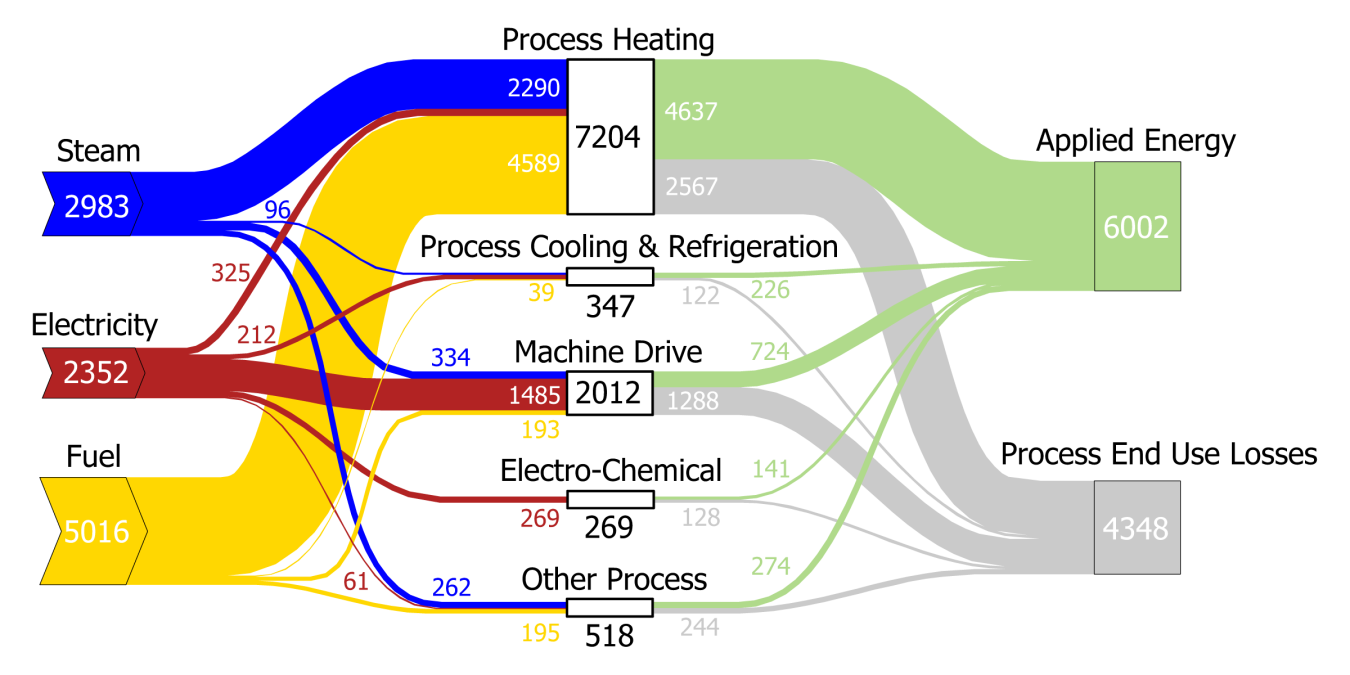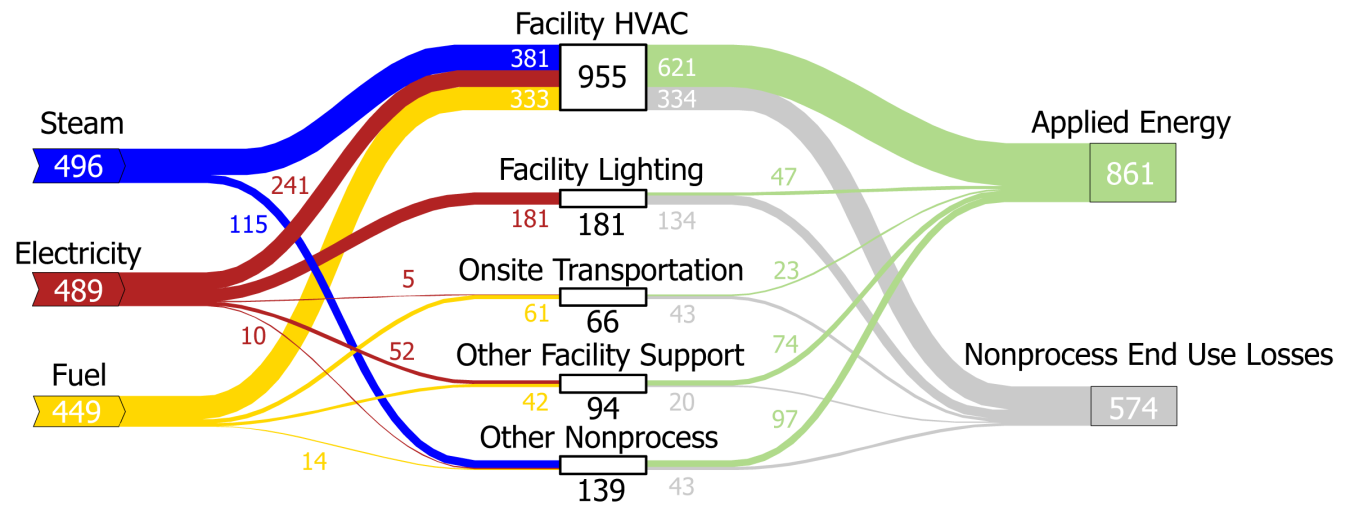Note: The Static Sankey diagrams were updated in May 2019 (available here) with the latest U.S. Energy Information Administration (EIA) Manufacturing Energy Consumption Survey (MECS) data for 2014 and updated assumptions.
The Onsite Generation Static Sankey diagram shows how steam and electricity are generated by U.S. manufacturing plants, based on EIA MECS data for 2010.
Click on the Full Sector, Process Energy, or Nonprocess Energy thumbnails below the diagram to see further detail on energy flows in manufacturing. Also, see the Dynamic Manufacturing Energy Sankey Tool to pan, zoom, and customize the manufacturing Sankey data and compare energy consumption across manufacturing subsectors (this tool is only available for 2010 MECS data).
The Onsite Generation Sankey diagram below shows offsite inputs of fuel and electricity that flow to conventional boilers, combined heat and power (CHP), and other steam- and/or electricity-generating systems. Generating steam and electricity onsite for use in plant operations results in some energy losses, which are estimated. Electricity generated from CHP systems, power systems (e.g., diesel generators), and onsite renewable energy from non-biomass sources is combined in the electricity output. Over 3,617 TBtu of steam and 438 TBtu of electricity were directly employed in end use manufacturing applications in 2010.
These diagrams visually complement the 2010 MECS data Manufacturing Energy and Carbon Footprint analysis. Definitions of terms used in this Sankey diagram are at the bottom of this page.
Data source: 2010 Manufacturing Energy and Carbon Footprint
TERMINOLOGY
Combined Heat and Power (CHP)/Cogeneration: The production of electrical energy and another form of useful energy (such as heat or steam) through the sequential use of energy.
Conventional Boilers: Boiler vessels that consume fuels or electricity as the primary energy source to produce heat that generates steam or hot water. Boiler losses represent energy lost due to boiler inefficiency.
Offsite Electricity Generation (net) (onsite generation input): The sum of purchased electricity and electricity transfers into the plant boundary and consumed in onsite generation, less quantities sold and transferred out. This value does not include onsite generation from combustible fuels or onsite cogeneration which are all accounted for by the “other onsite electricity generation” and “CHP/cogeneration” values.
Onsite Generation: The generation of steam or electricity within the plant boundaries using fuel or electricity. Onsite generation includes three categories: “conventional boilers” (to produce steam), “CHP/cogeneration” (to produce steam and electricity), and “onsite electricity generation” (defined below).
Onsite Generation Losses: Energy that is lost during the transformation of fuel into steam and electricity within the plant boundary.
Other Onsite Electricity Generation: Consists of 1) electricity obtained from generators running on combustible energy sources including natural gas, fuel oils, and coal and 2) electricity generated onsite from renewable sources other than biomass (e.g., solar, wind, hydropower, and geothermal).
Onsite Renewable Electricity Generation: Electricity generated onsite from renewable sources other than biomass (e.g., solar, wind, hydropower, and geothermal).
ACRONYM
CHP: Combined Heat and Power
NOTES
- The data source for this Sankey Diagram is the 2010 MECS data Manufacturing Energy and Carbon Footprint. The footprint analysis utilizes 2010 EIA Manufacturing Energy Consumption Survey (MECS) data, with adjustments, to quantify steam generation, electricity generation, and incoming fuel; onsite steam and electricity generation; and end use of electricity and fuel. Steam end use is not provided by MECS but rather is dependent on analysis alone.
- Energy values represent aggregate sector-wide data for 2010 in TBtu/yr, rounded to nearest whole number
- Excludes feedstock energy (byproduct fuels from feedstock are included)
- Arrow and box heights are proportional to flow size except for small flows for visual convenience
- Energy losses do not equate to recoverable energy, as a portion of these losses are thermodynamically unrecoverable
- Offsite generation shown on net basis (purchases, sales, and transfers accounted for)
- Offsite generation and transmission losses are not included in the Onsite Generation Sankey

